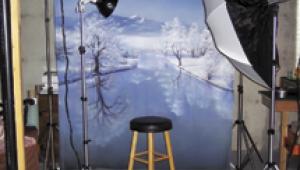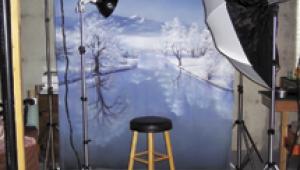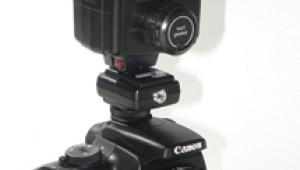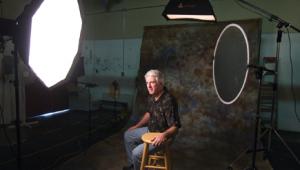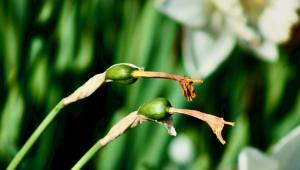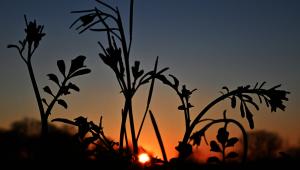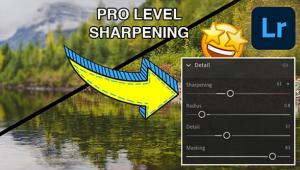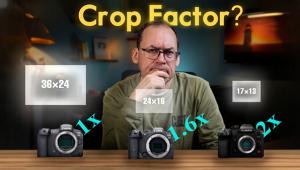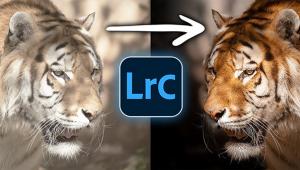Power Lighting On Location!; Studio-Quality Lighting With Minimum Gear: Four Masters Reveal Their Secrets Page 2
Joe Farace: An Unconventional Eye For Beauty
Joe Farace of Denver, Colorado, has been shooting professionally for over 30
years, but he resists being pigeonholed or classified. "You can't
call me a photojournalist because I often combine images to produce something
that looks realistic, but isn't. I certainly shoot lots of automobiles--everything
from classics to racing cars--but I also specialize in creating distinctive
fashion and glamour images of beautiful women. I guess the short answer is that
I photograph beautiful things and beautiful people.
|
|
|
"I do a lot of shoots with new and somewhat inexperienced models, and that's one reason I rely on portable location lighting equipment," Farace says. "A complex light bank attached to electronic flash units distracts from the mood I'm trying to create with a new model. So when I go on this kind of assignment, I'll pack a Sunpak digitLITE 600, which uses cool fluorescent tubes that do a good job at emulating daylight. With more experienced subjects, who are used to makeup and photo shoots, I like to kick things up a notch, adding a fantasy touch to create something avant-garde. In this application I use a Sunpak digitFLASH 1000 as a main light, or as a beauty light placed below the model's face, the way I formerly used a reflector back in the old days. This way I can create a `film noir' look with the least amount of gear possible. These Sunpak units are solidly built, easy to move around if your light stand has casters, and they put out the kind of soft, even light I can easily control. You might say they suit my `shoot-and-scoot' style to a tee."
|
|
|
Joe McNally: Master Of Light, From Photojournalism To Fashion
A renowned and much-honored photojournalist, Joe McNally is a versatile master
of lighting with an uncanny ability to create images that combine strong graphic
elements with powerful emotional impact. Whether he's covering hard news,
editorial and ad shoots, or fashion, his incisive eye and distinctive style
are clearly evident in his memorable images. McNally's accomplishments
have been widely praised, and the honors bestowed upon him include the coveted
Alfred Eisenstaedt Award for outstanding magazine photography, and induction
into the Kodak Legends Online archive.
|
|
|
McNally is on the road a large percentage of the time, which is why he places a high value on dependable, high quality, portable lighting equipment. His Pelican case typically contains 10 Nikon SB-800 strobes, five Nikon SB-80 strobes, a group of four SU-4 hot shoe slave units, SC17 and SC29 cords for off-camera, TTL operation, and 10 Justin clamps for setting up numbers of Speedlights in a variety of useful configurations, even in "difficult" locations. "In addition to Nikon Speedlights, I use Profoto lighting equipment," McNally says. "I have two Profoto 7bs with 1200 ws power packs that work on AC or with batteries, and I use the Profoto head as a bare bulb, or with an umbrella or softbox to create hard or soft light when I need it. To get soft, controllable light, I also employ a Profoto Beauty Dish, which is an oversized reflector with a honeycomb diffuser inside. The Profoto equipment gives me very precise control of any lighting situation." He also packs the usual assortment of useful stuff, including Scotch tape, gaffer tape, a small fill card that doubles as a gray card, a Wave utility tool, a pair of PocketWizard Pro Max transceivers, and various Lumiquest light-softening attachments.
|
|
|
McNally says, "To create lighting you would swear was done with large
studio strobes, I usually group my Nikon Speedlights, using, say three units
as my main light, five as my fill lights, and the remainder--up to 10 more--as
background illumination. I can fire the entire battery of units simultaneously
by triggering the master flash, check the resulting image on my LCD, and toggle
the power output of each group up or down from camera position--it's
awesome. Sometimes I also use Bogen light panels from their small portable system
to enhance the lighting quality from my portable setup, and when I'm doing
portraiture, I'll travel heavy, carrying two cases of the aforementioned
Profoto gear, including spot grids, C-stands, and bank lights."
McNally has been a Nikon shooter for many years, graduating from film-based
Nikon Fs to the current digital line. His present cameras include Nikon D1Xs,
D2Hs, and D70s. "When I have to travel as light as possible, I'll
take my Nikon D2H and D70, 12-24mm, 17-55mm, and 70-200mm Nikkor lenses, plus
three SB-800 Speedlights and an assortment of Lumiquest diffusers," McNally
says. "It's amazing what you can accomplish with this compact, lightweight
outfit by bouncing the light off any flat surfaces or borrowing a bed sheet."
If you take a close look at his images, it is evident that McNally is not only
a resourceful master of illumination who can consistently create studio-quality
lighting on location, but is also a first-class photographer who adds the artist's
touch to anything he does, from his widely acclaimed book, Faces Of Ground Zero,
to the height of advertising fashion.
- Log in or register to post comments











